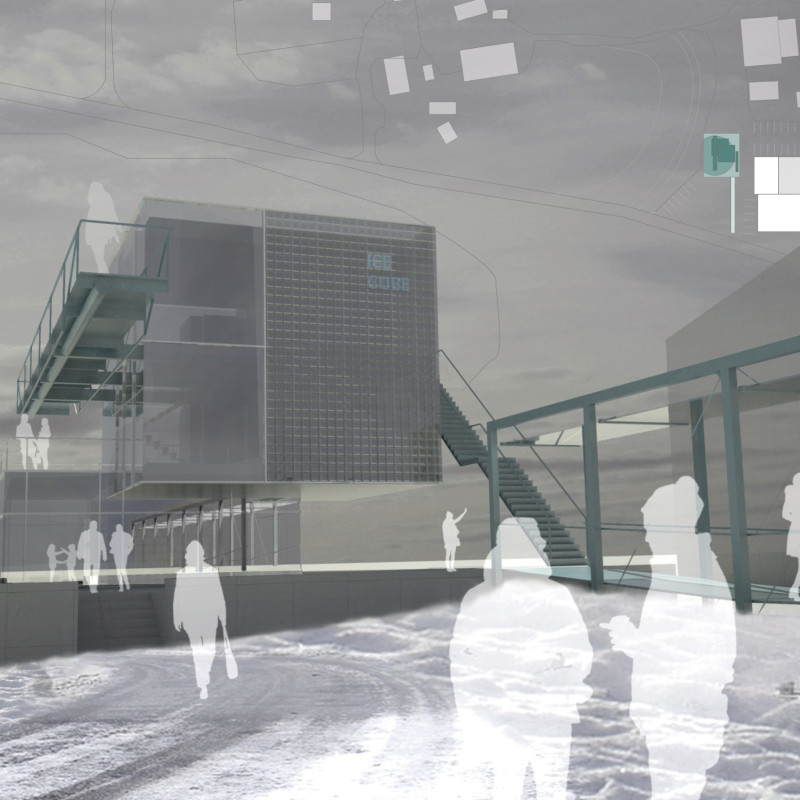5 key facts about this project
At the heart of the design is an emphasis on transparency and light. Expansive glass facades define the exterior, allowing natural light to permeate the interior spaces while inviting views of the bustling environment outside. This thoughtful approach creates a dialogue between the interior and exterior, fostering a sense of connection and openness. The use of high-performance glazing not only enhances aesthetic quality but also contributes to energy efficiency, aligning with contemporary sustainability standards.
The project functions as a mixed-use development, successfully incorporating retail spaces, residential units, and communal areas. This multifunctionality is key to its design, as it encourages movement and engagement among residents and visitors alike. The ground level features vibrant retail storefronts that open up to an outdoor plaza, serving as both a social hub and a functional threshold between the public and private realms. The careful arrangement of these spaces creates a dynamic interaction that enriches the user’s experience.
Materiality plays an essential role in the architectural expression of the project. A palette of local materials, including textured concrete, natural wood, and metal accents, is employed throughout the design. The concrete provides a robust foundation, while the wood elements offer warmth and a sense of human scale. Metal features, whether in railings or decorative elements, introduce a contemporary touch that complements the rest of the materials, creating visual interest and depth.
Unique design approaches are evident in various aspects of the project. The incorporation of green roofs and vertical gardens not only enhances the aesthetic appeal but also contributes to biodiversity and microclimate regulation. These features are a nod to biophilic design principles, fostering a connection between residents and nature, which is increasingly important in urban contexts. Furthermore, the layout promotes natural ventilation, reducing reliance on mechanical systems and improving indoor air quality.
Attention to detail is prevalent throughout the project. Elements such as customized lighting fixtures and integrated furniture solutions are designed to maximize space and functionality without compromising style. Additionally, the careful consideration of spatial organization facilitates ease of movement and accessibility, reflecting a user-centered design philosophy.
The project stands out for its commitment to community engagement. By incorporating public art installations and flexible event spaces, it invites local artists and organizations to contribute to the vibrancy of the area and fosters a sense of ownership among residents. This engagement is a key element of the design, reflecting an understanding of architecture’s role in enhancing social interaction and community cohesion.
In summary, the architectural project serves as a compelling example of how design can effectively merge functionality with aesthetic and community-oriented aspirations. The thoughtful integration of materials, unique spatial strategies, and an emphasis on sustainability position this project as a noteworthy development within its urban context. For those interested in a deeper exploration of the architectural plans, sections, designs, and ideas presented in this project, further investigation is encouraged, as it reveals the depth of thought and innovation embedded within this meaningful architectural endeavor.


























